
by Mark Smiley | Mar 28, 2018 | General Featured
by Lisa Marlin
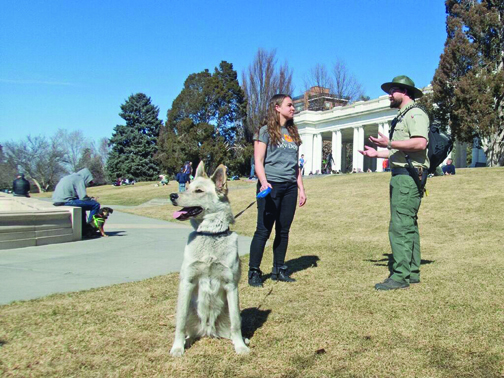
Patiently Waiting: Tugboat waits patiently on his leash while his owner Kyra Bebus visits with Sam Gannon, Denver Senior Park Ranger, at Cheesman Park. Tugboat is able to jump and play while safely on his leash, right.
“Rules are rules,” William McGihon of Denver said after he put a leash on his dog Liam when told to so by a park ranger on a warm March Sunday afternoon in Cheesman Park. “I am aware of the leash law, so I understood and was willing to cooperate obviously.”
The leash law forbids dogs to be off leash unless they are in a designated city dog park. The ordinance is posted on signs throughout the park system, but as outdoor temperatures rise, so does the number of people who ignore the ordinance, especially in Cheesman Park. In 2017, 20 percent of the 240 off-leash citations in Denver’s 228 parks were issued here.
“Cheesman Park has the highest number of off-leash dog issues, followed by Wash Park and City Park, probably because of its really big meadows and location,” said Denver Park Ranger Supervisor Jacob Wells. He also emphasized that leashes can’t be longer than six feet, so those retractable ones that allow owners to adjust the length beyond that are not okay.
It’s not just the parks that fall under the leash law. It goes for every public space throughout Denver’s jurisdiction that is not designated as a dog park. Last year, 576 off leash citations were issued outside of the park system, such as on neighborhood streets and sidewalks.
The citations carry a $100 fine for a first offense but that’s usually not the first course of action taken by animal control officers or park rangers. “We try to be more education-oriented than happy-handed,” Wells said, explaining that warnings are more frequently given and are dependent on the scenario. Someone playing frisbee with their dog when no one else is around might get a warning, but when the park is busy, the consequences are different. “A couple of years ago I came across a situation where someone was throwing a ball and their dog tripped someone else and broke their wrist,” said Wells.
Often when dog owners are confronted, they res

Leash Law: Denver Senior Park Ranger Sam Gannon reminds William McGihon that his dog Liam needs to be on a leash at Cheesman Park.
pond much like Liam’s owner did. “I just felt like he was under our supervision and control by voice command, so I thought that was probably an acceptable scenario,” McGihon said. Of course, he quickly learned it wasn’t when Sam Gannon, the senior park ranger patrolling Cheesman, stopped to chat with him.
“When I see violations, I tend to talk to people and remind them this is a park rule and we need you to follow it,” said Gannon. “And then we give them a reason, which is usually other people’s enjoyment of the park and safety. Once people get the reason behind the rule, we tend to get a lot more compliance.”
He explained that citations are used as a last resort to gain compliance with people who don’t heed a warning and decide they want to do it anyway, even with the $100 fine. A second offense jumps to a $250 fine and goes to $500 for a third.
With a citation avoided and Liam leashed, Gannon headed over to where 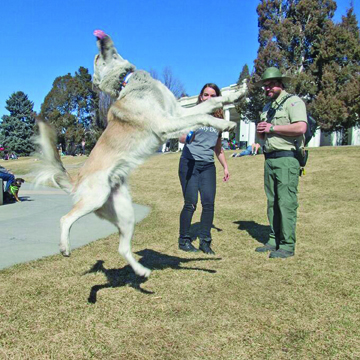 he saw a medium-sized dog running freely about 50 yards away. But since Gannon is easy to spot in his distinctive wide-brimmed hat, gray shirt and green trousers, the dog was quickly leashed by its owner before he reached them. “When people see me and they visually comply, oftentimes I will not remind them of the rule. But a lot of times if they’re visually complying they know the rule anyway,” Gannon said.
he saw a medium-sized dog running freely about 50 yards away. But since Gannon is easy to spot in his distinctive wide-brimmed hat, gray shirt and green trousers, the dog was quickly leashed by its owner before he reached them. “When people see me and they visually comply, oftentimes I will not remind them of the rule. But a lot of times if they’re visually complying they know the rule anyway,” Gannon said.
This ended up being the case with the woman who leashed her dog before Gannon got there. Later, she shared that she is from north Boulder where leash laws are different. “I don’t know Denver’s leash laws though I assume there are some,” said Lindsey Riley who was at Cheesman with her dog Clyde as he strained on his leash to play with Tugboat who was there with his owner Kyra Bebus.
As the dogs sniffed, pawed and frolicked around each other, Bebus kept a close eye and tight hold on her pet. “I know Tugboat is harmless, but he is a one-year-old puppy that weighs 80 pounds and he can get a little excited playing and that can definitely be intimidating to people who aren’t used to that,” she said. That’s why she usually heads to dog parks in the Denver-area where Tugboat can run and jump with other dogs off leash to his heart’s content. Leaving Cheesman, she took Tugboat a short distance away to the recently opened Carla Madison Dog Park off Colfax.
Wells said this newest dog park should help alleviate some of the off-leash issues. Having more rangers patrolling should also have an impact. “We bring in most of our resources when we see more people using the parks, from about April to September, he said. “Our ranger group is growing and so with more of them in the field to spot issues, the situations go down.”
They may go down, but not away. As Gannon stood just beyond where he parked his patrol unit near the Pavilion at Cheesman Park, he browsed the surrounding lawns where people and their pets were coming and going. “There will be dogs off leash here all day,” he said. Some he’ll see as he patrols and others he’ll hear about from calls made to 3-1-1, Denver’s Help Center. He’ll talk to as many dog owners as he can and hopefully see them comply, but if a citation is what it takes, he’s ready to do that too. “It is truly an issue and we do take it seriously,” he said.

by Mark Smiley | Mar 23, 2018 | Editorials
One ring to rule them all, one ring to find them One ring to bring them all and in the daRkness bind them

Norm Brownstein
David Sirota, senior editor for the International Business Times, called the Denver based law and lobbying firm of Brownstein Hyatt Farber and Schreck, LLC (the “Brownstein Law Firm”) the Octopus as its corrupting tentacles stretch to every important institution in Colorado and even Washington, D.C.
Norm Brownstein, Jack Hyatt and Steve Farber formed the firm 50 years ago just out of University of Colorado Law School. Today the law firm law has over 500 attorneys in 11 offices across the country. From the start Brownstein and his fellow attorneys were never the most talented or brightest lawyers, but operated on the maxim — “It’s not what you know, but who you know.”
The firm has and does pour enormous sums of money to politicians and other movers and shakers in Colorado and Washington, D.C. In turn the Brownstein Law Firm expects, or more correctly demands, favors in return. One can go nowhere in Colorado in any hallway of power and not run into a present or former Brownstein attorney. Brownstein attorneys have been the City Attorney for Mayor Michael Hancock, the Chief of Staff for Governor John Hickenlooper etc. etc. It is not simply state and local offices as the United States Attorney for Colorado, Robert Troyer, is a former Brownstein partner who will undoubtedly return to Mordor once his term serving Donald Trump is over.
The Brownstein Law Firm is only interested in power and thus it makes no distinction between Republicans or Democrats. Troyer himself was appointed to the United States Attorney’s Office by President Obama, but the Brownstein Law Firm had enough pull in Republican circles to get Troyer appointed to a permanent U.S. Attorney for Colorado position.
If you have been wronged by the Brownstein Law Firm do not think you can successfully seek justice in state or federal court in Colorado, as many, if not most, of the judges have been appointed to their positions due to the influence of the Brownstein Law Firm.
The most recent scandals involving Denver Mayor Michael Hancock show just how far the malodorous influence of the firm extends. Back in 2011 The Denver Post and Channel 9 News discovered that Hancock had been a client of the Denver Players/Sugar brothel. Bruce James, the managing partner of the Brownstein Law Firm, who was the co-campaign manager of the Hancock for Mayor effort, convinc
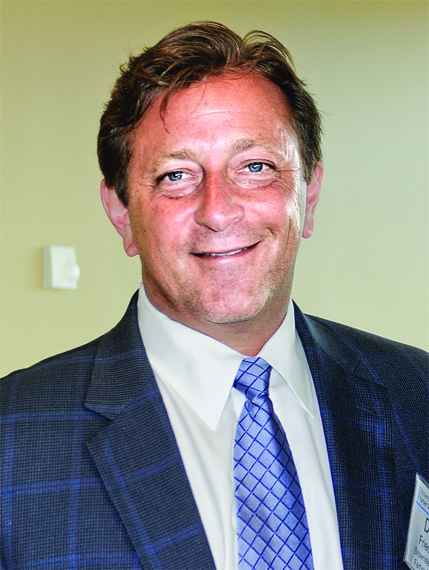
Doug Friednash
ed those two news organizations not to publish anything concerning the Hancock scandal until after the election promising to provide proof that Hancock was innocent.
After Hancock won James reneged on his word. It was believed that Hancock had been filmed going into the brothel by the Denver Police. When the Post and Channel 9 News submitted a joint open records request for the video, James volunteered to sign on to show Hancock was “open and transparent,” but, in fact, he surreptitiously and separately sent a second secret letter to Police Chief Gerry Whitman on behalf of the mayor-elect. The police chief, of course, knew that in a matter of weeks Hancock would have the power to fire him without a moment’s notice. In the secret letter James instructed the police chief to send him all the evidence and then not tell the public what had been done. Unfortunately for James the second letter was discovered by Channel 7 News. Allegedly the members of the Brownstein Law Firm were unfazed at the bad publicity, allegedly laughing about how clever and utterly unscrupulous the firm’s attorneys were.
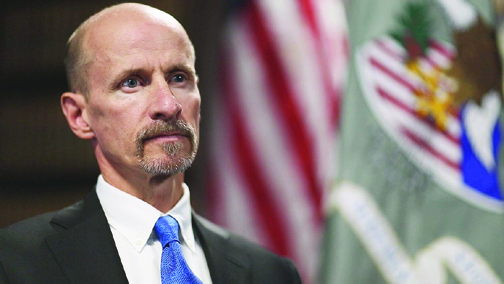
Bob Troyer
The scandal went away when The Denver Post simply declared that there was all of a sudden no proof tying Hancock to Denver Players/Sugar. Since that time The Denver Post has acted as little more than a cheerleader for Hancock.
Now when the Post identifies Norm Brownstein it often no longer calls him a lawyer or a lobbyist but rather a “philanthropist.” Cynics note that even Al Capone gave back a little bit of his ill-gotten gains to soup kitchens in Chicago, but the Chicago papers were never so debauched as to call him a “philanthropist.”
Don’t want the Winter Olympics in Colorado in 2026? Not to worry; the Brownstein Law Firm doesn’t care what you think or want and they have a partner on the Denver Olympic Exploratory Committee to help with the legal work to bring that financial and logistical nightmare here. Don’t want the massive taxpayer giveaways to b

Bruce James
ring Amazon’s second headquarters to Denver? Once again don’t worry, the Brownstein lobbying arm has a lucrative contract to try to make it happen, citizens be damned.
There is virtually nothing in Denver which citizens hate that the Brownstein Law Firm hasn’t had a hand in and made a profit from. It has gotten so bad when a member of the Denver illuminati sees horrendous traffic jams or when parks and open space are destroyed or when neighborhoods are ruined by high density apartment houses he or she simply shrugs and notes: “Well I guess we have just gotten Brownsteined again.”
Over the last 50 years since the founding of the Brownstein Law Firm, Norm Brownstein and his partners have gotten incredibly rich, but they have done so on the backs of every man, woman and child in the City and County of Denver. Happy 50th Lord of the Rings. May justice someday come to your doorstep.
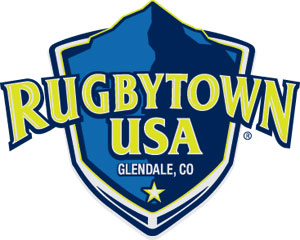
by Mark Smiley | Mar 1, 2018 | Glendale City News
by John Arthur
Writer for and on behalf of the City of Glendale
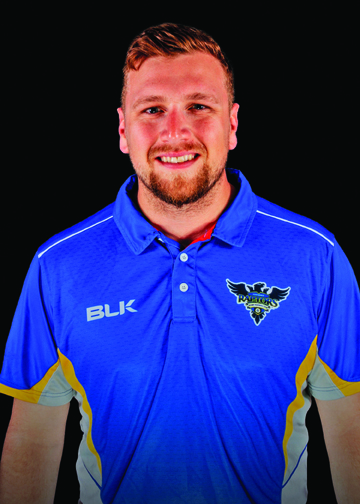
Glendale coach Dave Synnott, originally from England, began playing rugby as a youth and his coaching resume is a handsome one.
Last December nearly 200 athletes, all of them High School All-Americans, traveled to Arizona for USA Rugby’s 2017 Boys High School All-Americans Camp. Joining them was Glendale’s Under-23 team head coach, and professional Glendale Raptors strength and conditioning coach Dave Synnott. Attending in an administrative and coaching capacity, Synnott spent the five-day camp at Casa Grande Sports World interacting with the next generation of rugby talent.
Head Coach Salty Thompson oversees the USA Rugby 15s and 7s High School All-Americans teams and orchestrated the December camp. Athletes invited to the camp must first be named All-Americans, meaning they were likely scouted while playing in one or more of five annual tournaments, known as Regional Cup Tournaments. The largest and most attended Regional Cup Tournament, known as the Rocky Mountain Cup Challenge, takes place in Denver each June. Selection by the All-American scouting network is not the exclusive path to an invite, however, with some participants selected through the Eagle Impact Rugby Academy (EIRA), and others scouted while playing in high-performance rugby events.
All-Americans teams are comprised of players from across the United States, and field both 15s and 7s squads. The December gathering of the best young rugby talent from across the country was the largest in some time, with 184 athletes in attendance alongside more than 30 coaches, trainers, and staff. Players are grouped according to their ages, with the camp fielding Junior Varsity (Under 17) and Varsity (Under 19) teams. Synnott noted that he acted largely as a coach during the camp, and that he worked primarily with the U17 and U18 players.
The focus of the five-day gathering is on individual skill development, involving not only physical training and scrimmaging, but also strength and conditioning work, classroom sessions, and cognitive training. Camp days are full: participants wake before 7 a.m., followed by stretches, breakfast, a classroom session, and then two hours on the training paddock. A coaches’ evaluation precedes lunch, then it’s back to the classrooms for another session before more training or a scrimmage. Following an evening meal, players review the day before a final coaches’ evaluation and more stretching. The lights are out at 10 p.m.
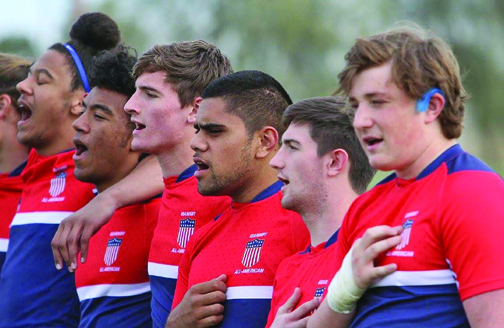
The Boys High School All-Americans sing the national anthem before one of their matches with Canada during the 2017 USA Rugby High School All-American Rugby Camp in Arizona.
Glendale coach Dave Synnott, originally from England, began playing rugby as a youth, representing the East Midlands in Academy level competition. His coaching resume is a handsome one, having worked extensively at the high school level, and winning two U.S. national titles as an assistant coach for a women’s college team. He describes this period of extended success as the time when he fell in love with coaching. Synnott moved to Colorado in April 2017, and endeavored to join the Raptors immediately, “I reached out to Raptors coach Dave Williams and said I’d love to get involved. I started with the men’s D2 team, then Dave let me run some drills with the elite guys, and since then I’ve been doing the skills part for them. They made me head coach of the U23 team in June.” Synnott’s role in Glendale and at the All-Americans camp is significant: he is helping to shape the future of rugby talent in the United States.
Embracing the excitement of international competition, the December camp included matches against two of Canada’s Under 18 teams. Synnott describes the action: “The Canadian teams trained all week, and then we scrimmaged them on the second day and the last day. It’s a way for the boys to get an international taste of the game, and also to get the Americans and the Canadians an extra couple of games in the winter.” The presence of the Canadian competition brought an additional level of excitement for the players, as well as furthered development. Synnott noted that the level of play at the camp was exceptional, “There were definitely some future Eagles at this camp and some future MLR talent as well.” With Glendale’s U23 team poised to act as a true feeder team for the professional Raptors squad, this is high praise.
The Glendale Raptors Rugby Academy Elite Development Program offers a pathway to professional-level competition for players under 23 years of age. Synnott explains the Academy’s strategy moving forward, “We are recruiting the top talent in the country out of high school. We have a good relationship with EIRA (Eagle Impact Rugby Academy), which is run by Salty Thompson, and he will send players our way if they’re not going to college or if he thinks they’ve got a professional prospect. It’s definitely a program that’s building for the future and it could be very handy for the MLR Raptors team.” Although scouting was not permitted at the All-Americans camp, it is clear that Synnott, and Glendale, have their proverbial finger on the pulse of young rugby talent in the country. Building on a history of distinction, it’s clear Raptors programming will continue to be among the strongest in the nation.

by Mark Smiley | Mar 1, 2018 | General Featured
by Ed Mate, Executive Director
Colorado Golf Association
For most golf fans the return of Tiger Woods is a long overdue and welcoming sight. It is well documented that Tiger’s influence on Nielsen ratings is as direct and powerful as low interest rates on the stock market. What amazes me are those who believe that the sport either a) doesn’t really need him or even, b) is better off without him. For those it goes something like, “We have all of the young guns, like Rory, Rickie, Jordan and Dustin.” Pardon me, but that sounds more like roll call at an after school daycare than the lineup of a world class sports franchise like the PGA Tour. Let’s be honest folks, the PGA Tour needs Tiger — no, not to survive, but if the sport hopes to enjoy anything remotely close to its previous notoriety, cache and basic “cool factor” it is going to need more than Chez Reavie and Ryan “I’m no Arnold” Palmer slugging it out on the back-nine on Sunday.
Personally, the reason I am excited about Tiger’s return is only partly due to his amazing talent and golf charisma. Yes, I will enjoy watching him attempt to regain his previous form, but I am more interested in seeing how he can use his “rebirth” (if indeed that is what we are witnessing) to influence a sport that has evolved significantly since his last major championship win in 2008. Over the past 10 years the game has rolled out more innovative and forward-thinking growth of the game initiatives than it did in the previous 100 years. Drive-Chip-Putt, PGA Junior League, LPGA/ USGA Girls Golf, and Youth on Course are four of the keystone programs that have been embraced by the golf community on the local, state and national level. These programs are all designed, in different ways, to attract a wider and more diverse audience to the sport. Time will tell if they will be successful, but early evidence is extremely encouraging.
What does all this have to do with the Colorado Golf Association, or for that matter, what does it have to do with the Denver and Cherry Creek corridor who receives this publication? Quite a lot actually. The Colorado Golf Association just so happens to own and operate CommonGround Golf Course, the former Lowry Air Force Base course that went through a complete metamorphosis in 2008 — the same year Tiger took down Rocco Mediate in an 18-hole playoff to win the U.S. Open — the last of his 14 major golf championships. CommonGround, as its name suggests, was designed to be “a place for all and all the game teaches.” CommonGround is the Colorado Golf Association’s vehicle to introduce golf to those who previously had no access to the game.
The CommonGround campus includes an 18-hole championship golf course designed by world-renowned architect, Tom Doak. But it also includes a practice facility that is regarded as one of the best in the state, a nine-hole Junior Par 3 course that is absolutely free to kids under the age of 18 and an expansive community putting green that is free to everyone with a putter and some time on their hands. But more important than the campus itself, it is the programs that are hosted at CommonGround that make it such a community asset. Among these programs is the Solich Caddie & Leadership Academy that was featured in this publication last year — a program that introduces 30 to 35 young adults (mostly 8th and 9th graders) to a summer job, leadership training, and community service. The CGA uses CommonGround to create partnerships with organizations such as Big Brothers-Big Sisters, Special Olympics and a dozen neighborhood schools to bring the game to those who would never otherwise experience it. CommonGround hosts over 200 outside groups every year who make use of the facility to raise money for charity, provide after work recreation to their employees, or simply provide a gathering place for old friends.
CommonGround most certainly is living up to its name, but I can’t help but wonder how much more we could do with a champion like Tiger Woods serving an ambassadorial role. The community surrounding CommonGround is one of the most diverse of its size anywhere in the country. When you drive the Havana corridor you will see every ethnic restaurant you can imagine. Wouldn’t it be cool if Tiger used his notoriety and global brand to encourage those living in this community to identify more strongly with the sport of golf? Tiger has described himself as a “Cablinasian” speaking to his Caucasian, Black American, American Indian and Asian heritage. What could be more perfect to promote CommonGround and all it represents than Tiger Woods’ return to the world stage of golf?
With Tiger’s return it is my hope that he will do more than simply hoist trophies once again. It is my hope that instead of slamming clubs and dropping expletives, the new and improved Tiger will speak more openly about his diverse ethnic background and encourage those who look more like him to consider taking up the sport. Ultimately, Tiger Woods can do so much more than move the needle with sponsors and televisions viewers. He truly can help change the face of the game and those who play it for generations to come. In 2008 the game of golf wasn’t ready and neither was Tiger. Today the game has done its part as evidenced by what is happening right here at CommonGround.
Come on, Tiger, it’s your turn!
Tiger’s Back: Tiger Woods competed in his first back-to-back tournaments since April 2017 when he teed off at the Honda Classic on February 22, 2018, at PGA National Resort and Spa in Palm Beach Gardens, Florida.
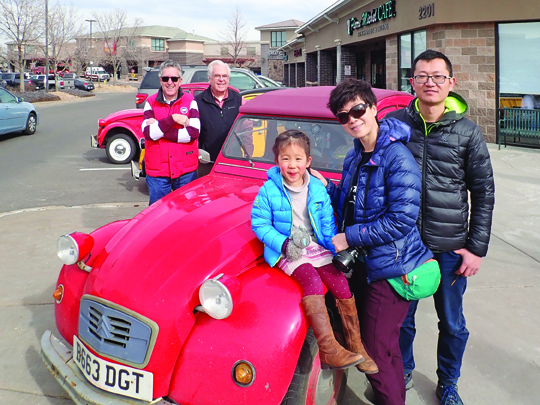
by Mark Smiley | Mar 1, 2018 | Travel
by Lisa Marlin

Around The World: At the Pierre Michel French Cafe in Littleton, Camilo Salazar, left, and Gary Daniels, met up with Jie Ding, Chang Luo, and their daughter Yuding who are traveling around the world in their 1985 Citroën 2CV.
England. Russia. China. Colorado. Nine months into their two-year road trip, the Luo Family has traveled to all these places with their primary mode of transportation being a red 1985 Citroën 2CV. This small, no-frills French car was produced from the late 1940s to 1990 and still garners interest worldwide.
A group of Denver-area Citroën enthusiasts greeted Chang Luo, wife Jie Ding, both 38, and their four-year-old daughter Yuding, when the family stopped for lunch at a French café in Littleton on January 31. They’d recently journeyed to the Arctic Circle and were driving south through the Americas.
“It’s just life on the road,” said Ding, after unbuckling Yuding from a car seat in the back where their luggage is also stacked. “Chang enjoys cars so much and I enjoy traveling and meeting people so much and this car just combines our interests, so we enjoy it.”
This is not their first road trip. In 2011, Luo got the job of an automobile engineer in London. Before moving there, he and Ding carefully studied the feasibility of driving from their home in Shanghai to his new job in London along the ancient Silk Road and decided to do it. Five years later he bought and restored the Citroën, then he quit his job so he and Ding could take their young daughter on an even longer road trip before she starts school. Why travel in a 33-year-old car? “This car is very interesting. I put a lot of effort into it. It has to be this car,” he said.
Ding said the experience enriches their family time. “For two years we can spend 24 hours a day together, to plan together, to see things together. I think that’s really important and we appreciate that we have this time to do that,” she said.
The first leg of their trip began in April 2017 when they left England and drove through 19 countries on their way to China to visit family and friends. From there, they shipped the car to Vancouver, British Columbia.
“I do almost all the driving,” Luo said. “And the car needs attention from time to time, maintenance, servicing, and I do it all myself.” This seemed to be especially true in Colorado. “The elevation of Colorado is phenomenal, and the car feels it. The power has lost quite a few horses I would say, and the start can be quite tricky.”
He lifted the hood as the local Citroën enthusiasts gathered to peer inside and talk with him about the engine. Among them was Camilo Salazar who has owned several of the cars and keeps in contact with other owners around the world; that’s how he heard about the Luos’ trip and began emailing with them to help coordinate their trip through Colorado.
“The Citroën has the most impressive suspension in automobiles ever,” Salazar said, which makes it great for long distance trips. He said it’s also very simple to work on. “It’s basically a glorified lawnmower,” he said, which makes it louder than most cars and slower, topping out at 70 miles per hour.
Denverite Gary Daniels drove his Citroën across town to meet the Luos. It’s one of several he’s owned over the years. “Everybody has an interest in the car. You just have to ride in one,” Daniels said. “It’s so very versatile.”
Versatility can be important when traveling around the world in a car. Even though the Luos have a general plan to reach Argentina in a year, they’re not following a

Under The Hood: The Citroën is an air-cooled front-engine, front-wheel-drive economy car introduced at the 1948 Paris Mondial de Automobile and manufactured by Citroën for model years 1948-1990. In total, Citroën manufactured almost 9 million 2CVs and variants.
direct route by any means. After leaving Denver, they drove up Pike’s Peak, which was on their must-visit list in Colorado, but then changed their plans to head south from there, and instead ventured toward Montreal to celebrate the Chinese New Year with friends. On February 20, they sent word that they would be going to New York before traveling toward southern California where they’ll cross the border into Mexico. Wherever they go, they mostly stay in the homes of families they meet along the way or that they find through hospitality and networking services such as CouchSurfing.
Ding is blogging, in Chinese, about their adventure so their family and friends back home can keep up. “We have lots of stories to share with our followers to tell them what is going on in other countries. The normal family, what do they do?” she said. “Meeting car club friends has been the best part of our trip, we have been so surprised to see there are still quite a lot of Citroën fans in North America.”
After having lunch in the French café with their new Colorado friends, the family loaded back into their Citroën, buckling Yuding in her car seat. Luo said his daughter is coping very well with her new lifestyle. “She entertains herself in the car by drawing, singing, looking around, especially when we were in the north, in Alaska and northern Canada where there were many wild animals. That was a lot of fun.”
In a blink, they were off again, wide-eyed and heading down the highway in their bright red Citroën, adventure bound.

by Mark Smiley | Mar 1, 2018 | Editorials
 Denver media recently hyped that the eating and entertainment district along Cherry Creek near Virginia Avenue known as Glendale 180 is once again right around the corner. Channel 7 News declared that the “city could break ground as early as next year.”
Denver media recently hyped that the eating and entertainment district along Cherry Creek near Virginia Avenue known as Glendale 180 is once again right around the corner. Channel 7 News declared that the “city could break ground as early as next year.”
Deputy City Manager Chuck Line is quoted in a February 19, 2018, story in The Denver Post about the project: “Before, we were barely getting out of the driveway, and now we’re definitely driving down the interstate.”
Oh, pleaseeeeee! Members of this Editorial Board were instrumental in envisioning The Glendale Riverwalk which was later retitled Glendale 180 as far back as 2003. Since then, every few years the city has publicly announced that a groundbreaking would occur in the next 12 to 18 months.
Of course, it is not entirely the city’s fault. After an announcement that the city was envisioning building a Riverwalk modeled after the one in San Antonio, Texas, Mohammad Ali Kheirkhahi and his family who own Authentic Persian and Oriental Rugs rushed out and outbid the city for the 3.8 acres of developable land fronting Colorado Boulevard from longtime owner Jimmy O’Connor.
Grossly overpaying for the land, Kheirkhahi and his family apparently hoped to hold up the city for over three times what they paid for it. When the city declined, they went out and asserted the city was threatening eminent domain and organized potentially violent marches with the para-military groups like the Oath Keepers and others in an attempt to cow the City Council.
When that failed, the rug merchants brought a series of highly expensive lawsuits utilizing some of the most expensive lawyers in Colorado and the nation to stop any d

evelopment on land other than theirs. Having lost those lawsuits after spending hundreds of thousands of dollars, Kheirkhahi and his kin have filed numerous questionable ethics complaints with the highly dubious Independent Ethics Commission.
But the rug merchants may have finally outsmarted themselves. At their request the Kheirkhahi land was excluded out of Glendale’s Downtown Development Authority. Thus any development on their land cannot by law receive any tax increment financing. Because of that fact Kheirkhahi’s land is now worth a great deal less to any potential purchaser.
Having beaten back the rug merchant’s vicious attempts to destroy Glendale 180, the city has now entered into a Development Agreement with the highly regarded Lincoln Properties. But that is only the first step, and not the last, in getting Glendale 180 to become a reality. The next crucial step is agreeing to a “Financing Agreement” whereby the parties concur on how to pay for everything. Many a project in Colorado has died due to disagreements on who and how everything is going to be paid.
If that huge hurdle can be overcome, Lincoln Properties must submit a Site Plan for the land which would meet the public’s approval and garner a majority of the City Council. Even if that is obtained there is no assurance that the bonds and other financing instruments envisioned by the “Financing Agreement” can be successfully marketed. That will in part depend on how Colorado’s economy is doing when the city goes to the financial markets.
Thus, with all due respect to Mr. Line, we are afraid the city is hardly cruising along the highway to the destination of a completed project but rather Glendale has but simply left the driveway. When a “Financing Agreement” has been signed and a “Site Plan” approved, talk of a possible groundbreaking ceremony becomes viable, but even then, by no means assured.
We will let our readers know from time to time how Glendale and Lincoln Properties are doing regarding their goal of getting to a completed project. Excessive hype in the early stages of an actual project is not always helpful. Congratulations to Glendale and Lincoln Properties on the Development Agreement, but a great deal of hard rowing still awaits all involved.
— Editorial Board



 he saw a medium-sized dog running freely about 50 yards away. But since Gannon is easy to spot in his distinctive wide-brimmed hat, gray shirt and green trousers, the dog was quickly leashed by its owner before he reached them. “When people see me and they visually comply, oftentimes I will not remind them of the rule. But a lot of times if they’re visually complying they know the rule anyway,” Gannon said.
he saw a medium-sized dog running freely about 50 yards away. But since Gannon is easy to spot in his distinctive wide-brimmed hat, gray shirt and green trousers, the dog was quickly leashed by its owner before he reached them. “When people see me and they visually comply, oftentimes I will not remind them of the rule. But a lot of times if they’re visually complying they know the rule anyway,” Gannon said.












